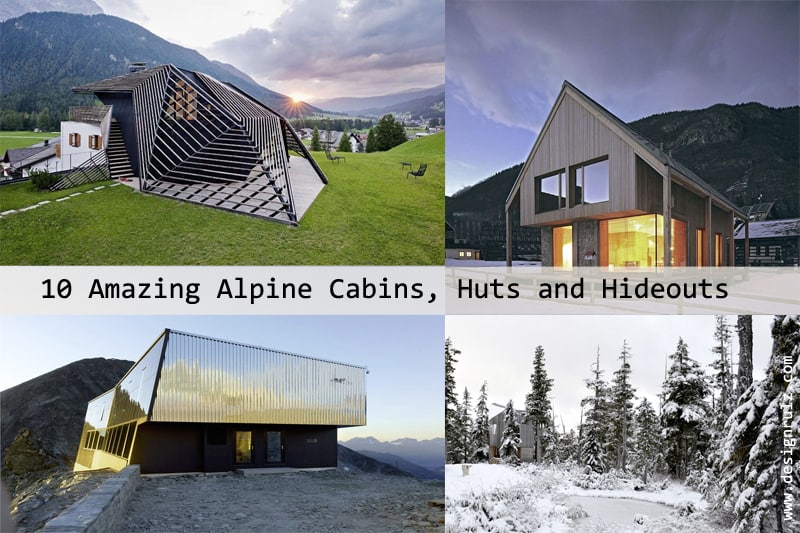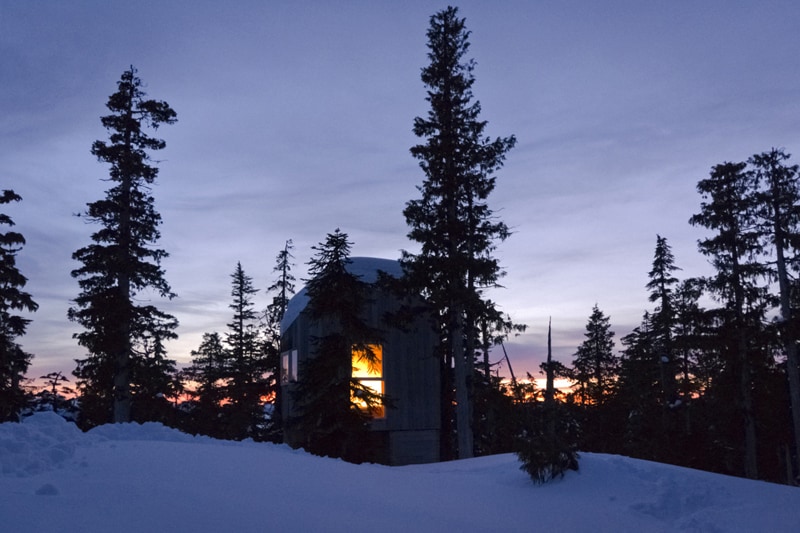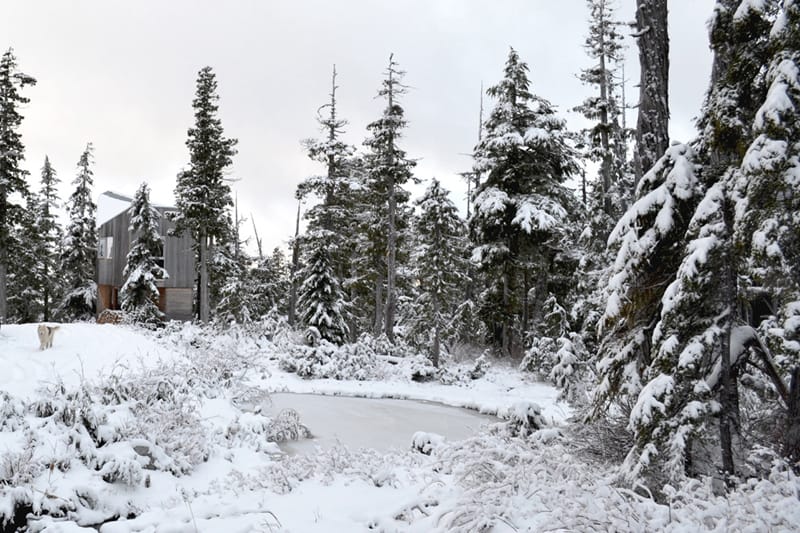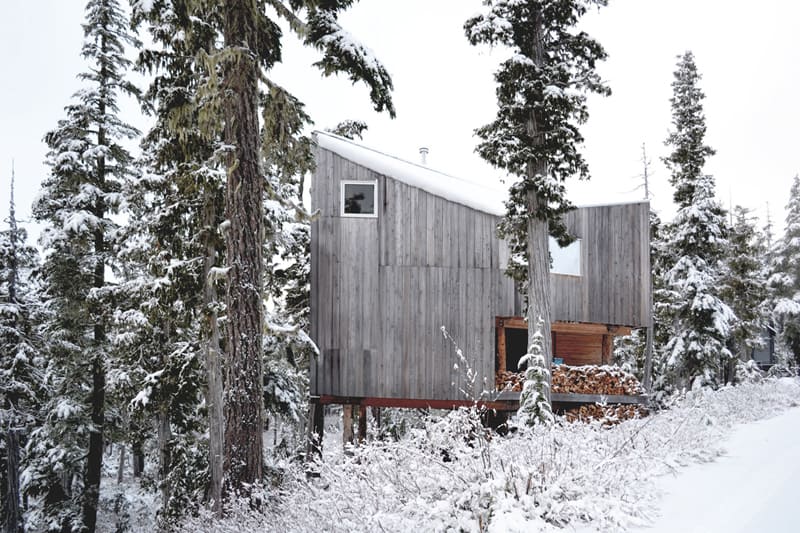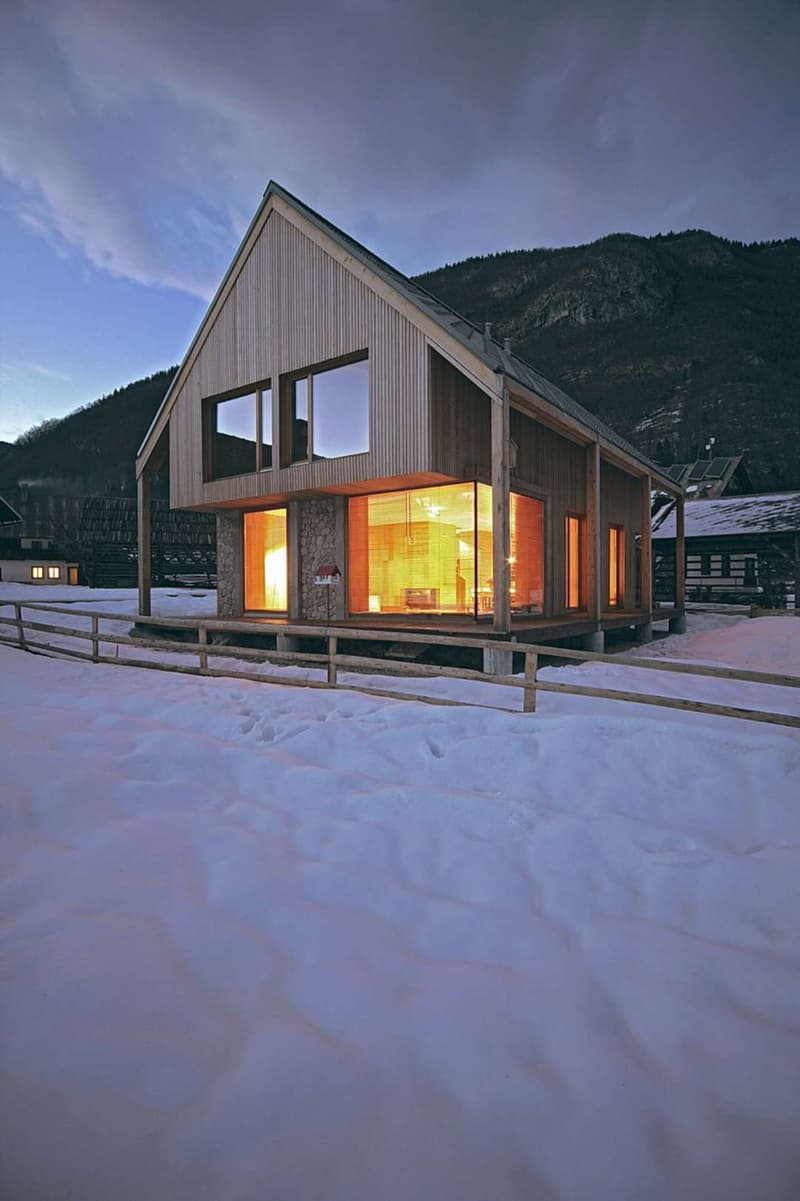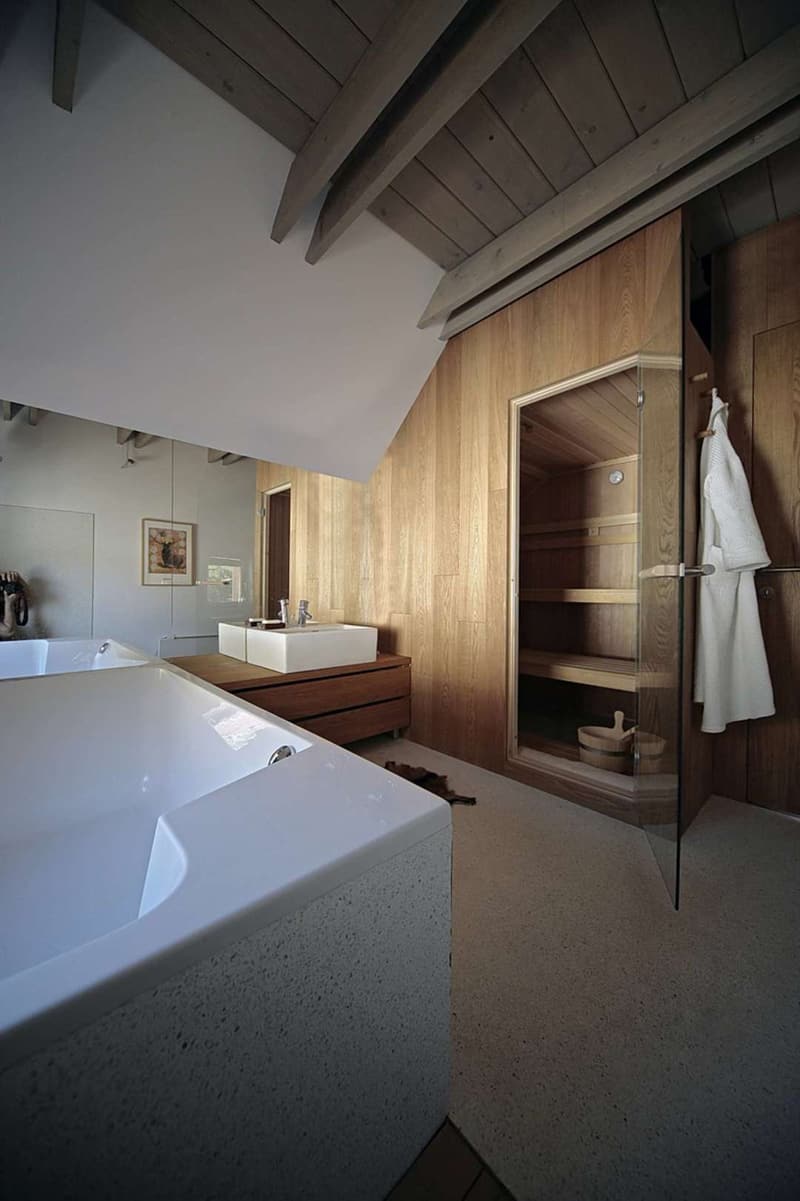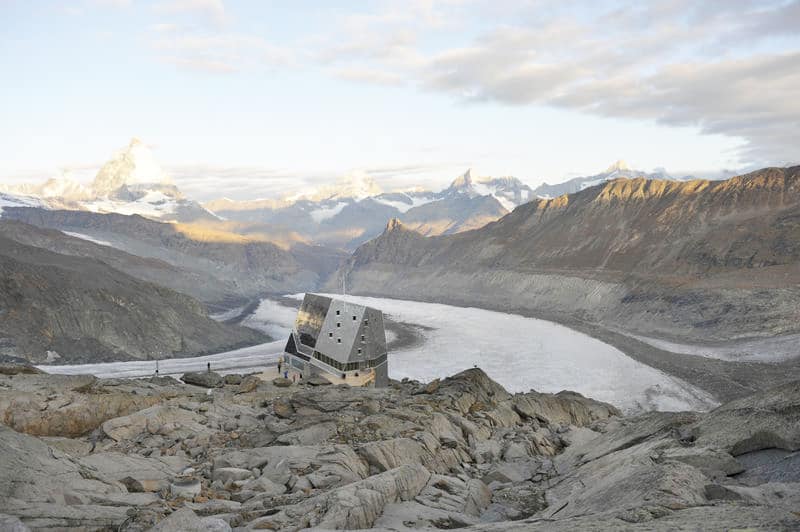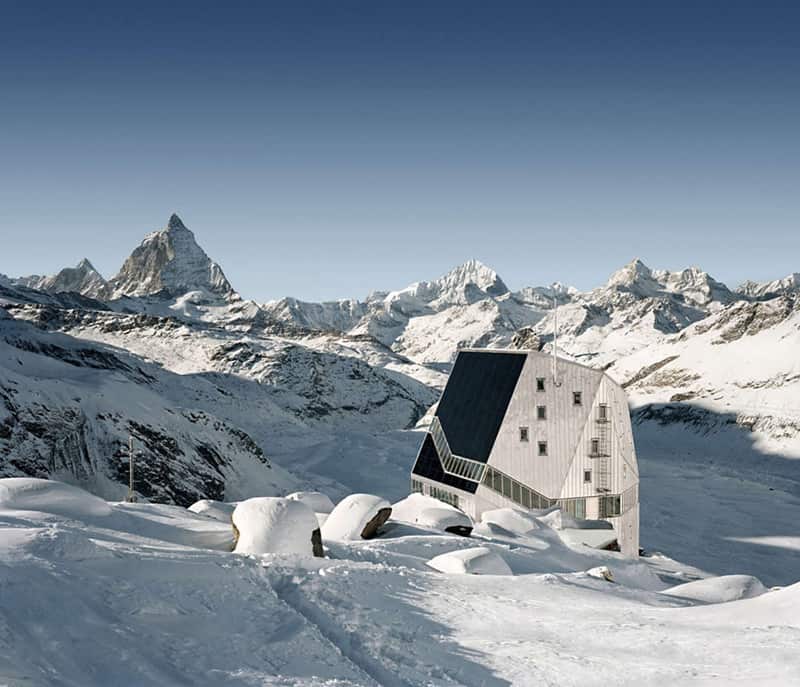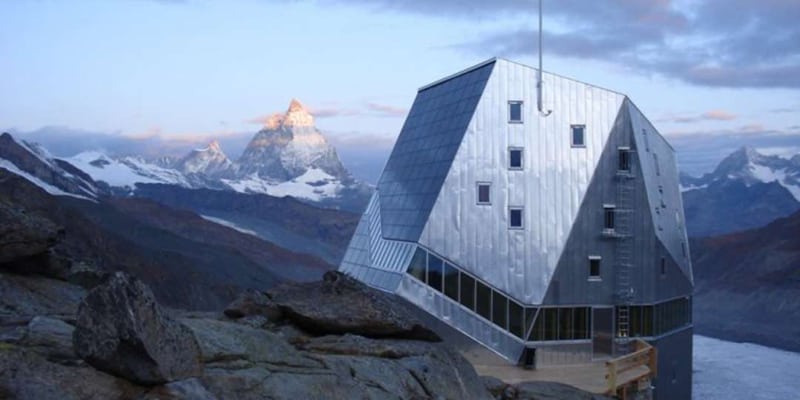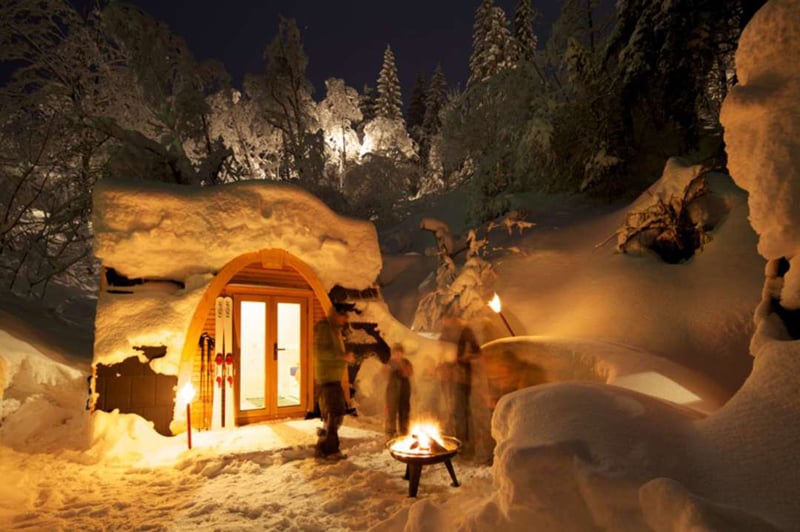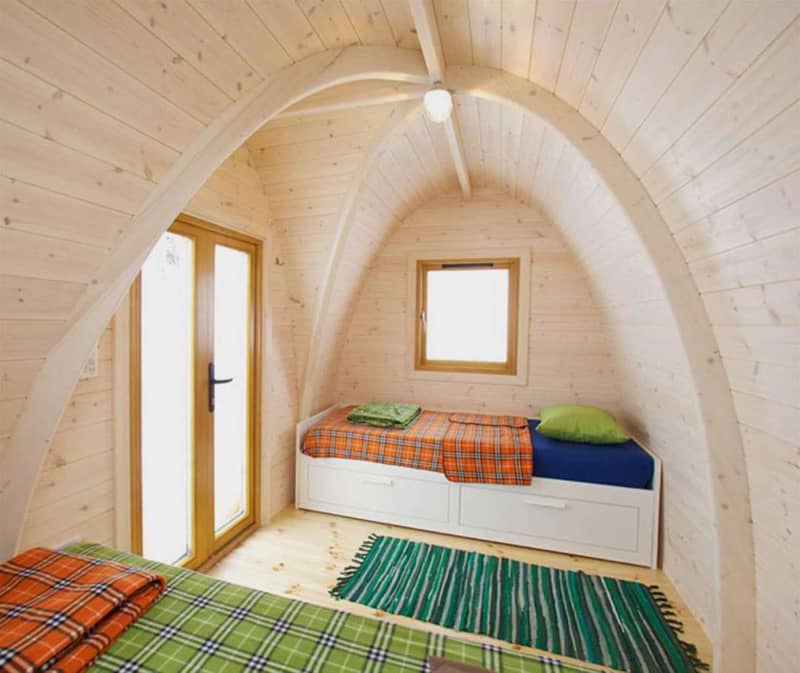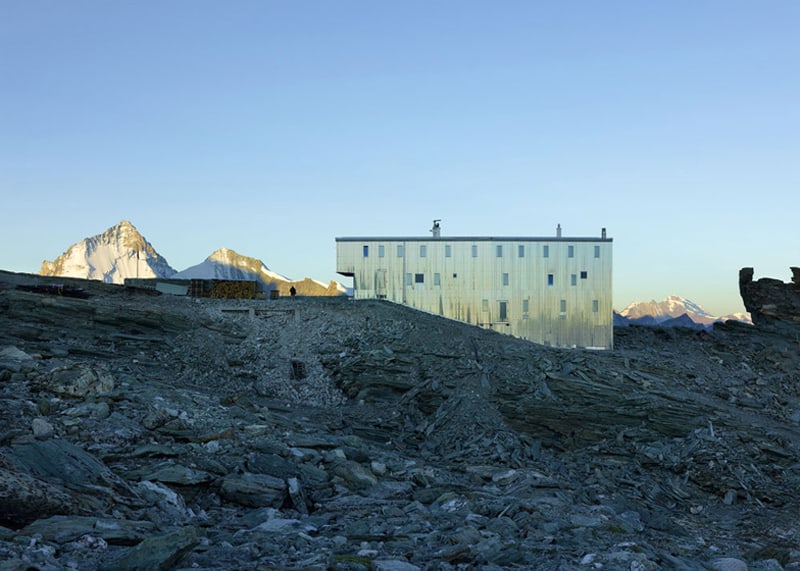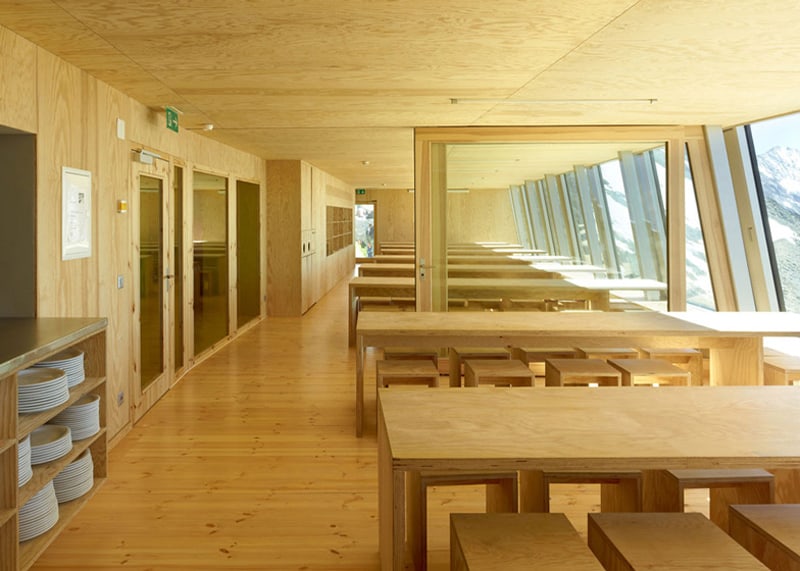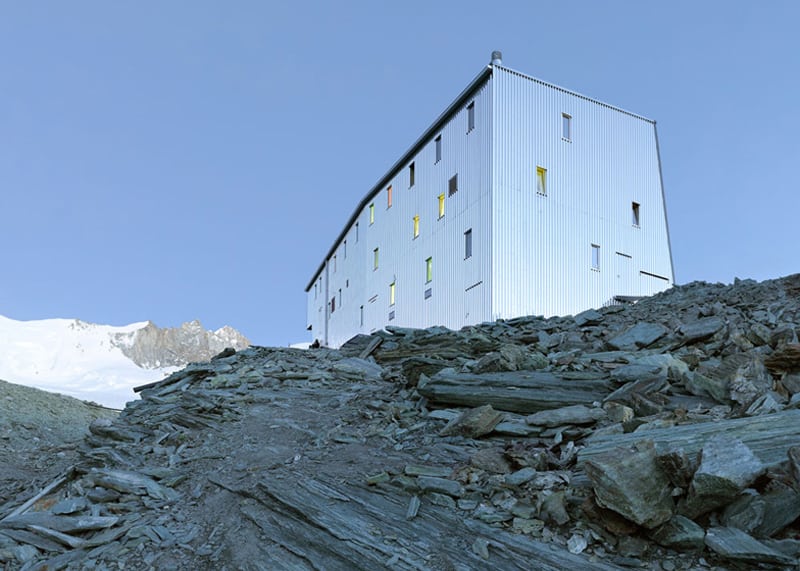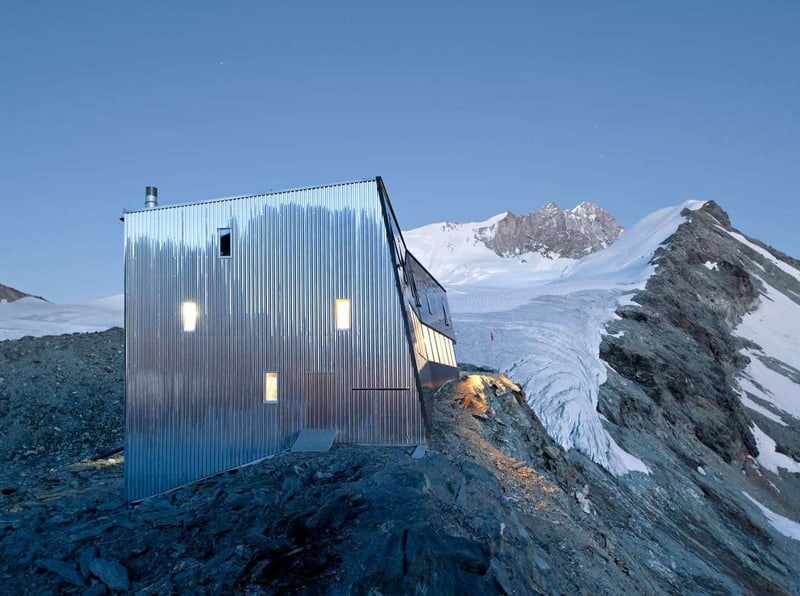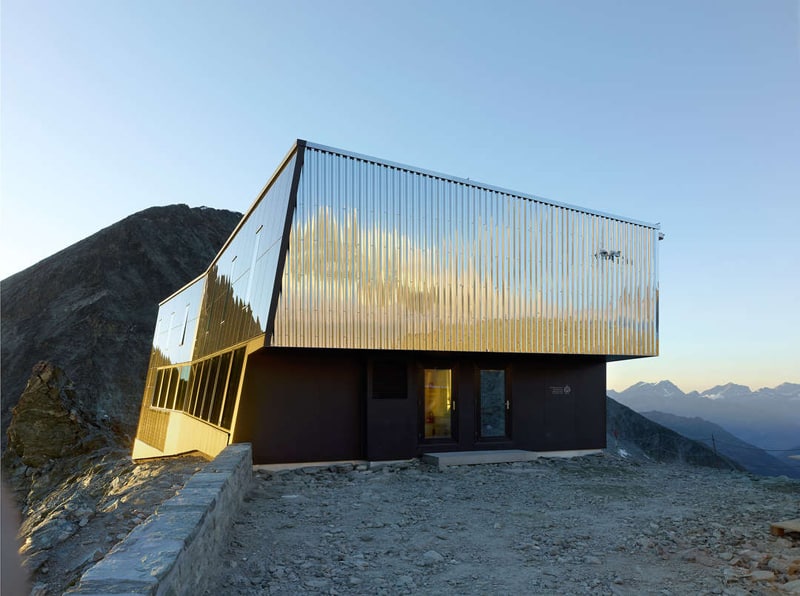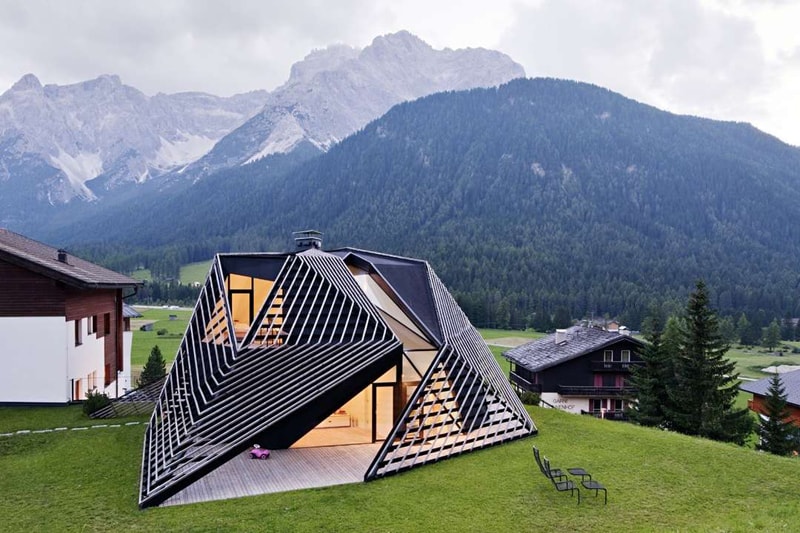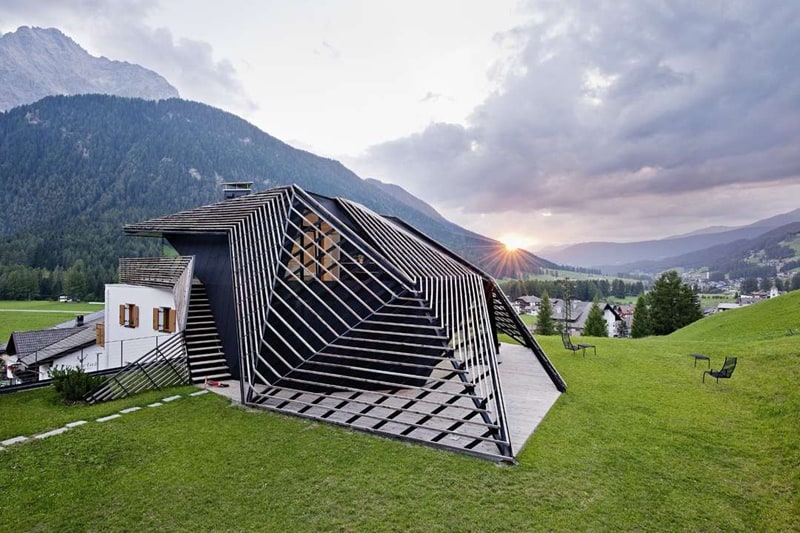Over the years, architecture of the Alpine region has evolved from simple timber structures to innovative, sophisticated, and eco-friendly buildings which capitalize on the large amounts of sunlight and wind, as well as stunning snowbound landscapes. For today we gather a great collection of 10 Amazing Alpine Cabins, Huts and Hideouts. Enjoy!
Alpine Cabin by Scott & Scott Architects
Vancouver architects Susan and David Scott launch their practice with the completion of a remote snowboard cabin located in an alpine powder haven on the North end of Vancouver Island. The cabin was constructed out of a desire to directly design and build as a singular act, to work with the freedom one experiences when snowboarding, and in a manner which is centered in the adventure and not bound heavily in pre-determination.
Camouflaged Tiny House in the Alps by Bureau A
Called Antoine after the name of the main character who is trapped in a landslide for 7 weeks in the novel Derborence by Charles Ferdinand Ramuz, the cabin was built in Verbier, covered with concrete rock, and transported to the town’s high-altitude sculpture park.
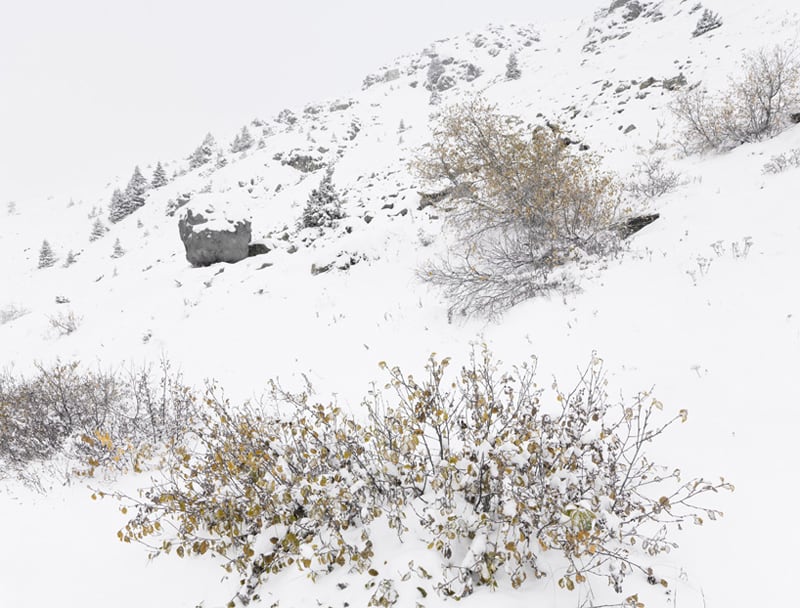
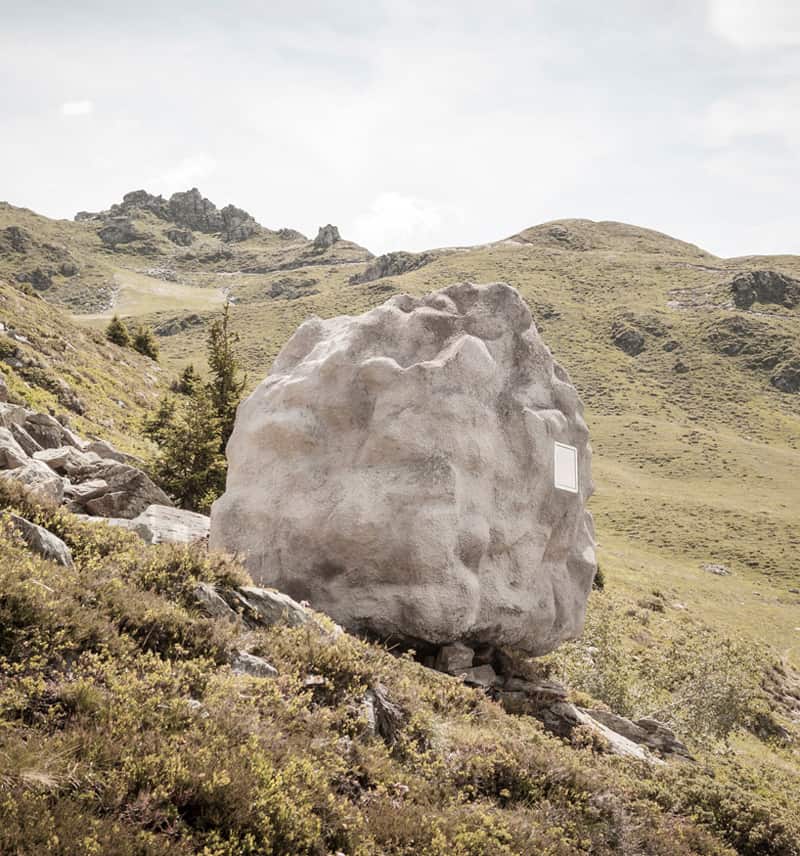
6 by 11 Alpine Hut by Ofis Architects, Stara Fužina, Slovenia
Completed in 2009, the house was designed by OFIS Arhitekti in line with a set of plans for a traditional Slovenian hut that had already been granted permission on the site .Thanks to smart positioning of the openings, extra thermal insulation, and rainwater collection, Ofis Architects managed to combine the rustic, tactile quality of traditional Alpine huts with the amenities of a modern home. The architects designed a contemporary version with the same dimensions, roof pitch and materials, meaning a new construction permit was not required.
Monte Rosa Hut by Bearth & Deplazes Architekten, Zermatt, Switzerland
The Monte Rosa hut (2,883 m) at the foot of the Monte Rosa massif has been a popular destination for hikers and mountaineers since 2009. The striking, ultra-modern building is virtually self-sufficient in energy. This aluminum-clad structure in Switzerland, nicknamed “Mountain Crystal,’’ generates over 90 percent of its energy requirements. A photovoltaic system integrated into its southern façade provides enough energy to power the building’s ventilation and heating systems, while rainwater is collected and stored in a cavern. A microfiltration system cleans the sewage and allows for graywater to be used in toilets and for washing.
The Feral House by Matali Crasset
A stretch of forest in France, not far from Meuse, Lorraine is home to a series of magical summer retreats. Paris-based studio Matali Crasset designed the Feral House as an experimental project built by inhabitants and volunteers of the Le Vent des Forêts area. Its playfulness is the result of a conscious effort to “avoid entangling the issue of form and function,” and draw inspiration from the natural setting. The structures function as lightweight eco-hotel rooms that can be moved around the forest. The Birdhouse cottage takes the form of a cubic cabin set on its end, and it’s the first of four “Feral Houses” that the designer has dreamt up for the region. 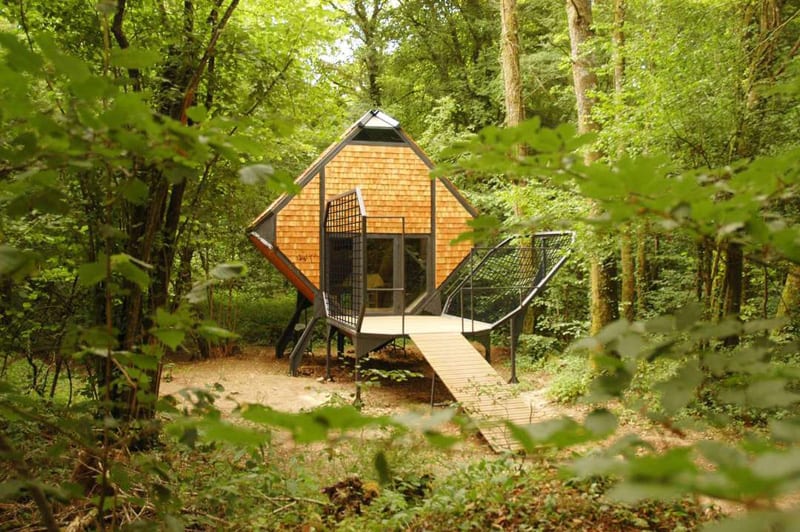
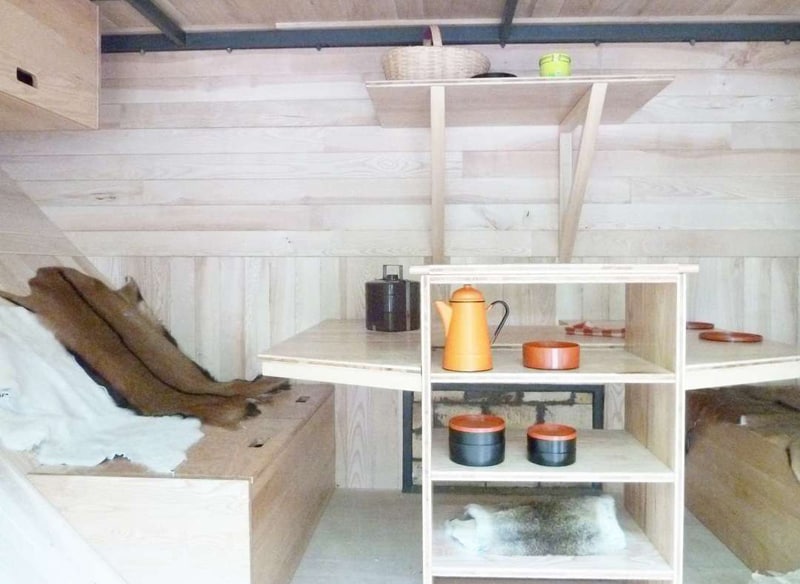
Eco POD Hotel in Switzerland, Switzerland
The POD Hotel is located in a small valley in Flims (Laax Falera), Switzerland. The POD Hotel is aimed to be a universal model for more sustainable tourism. The Pods are made of wood and easily assembled. It has basic amenities and are big enough to house two tourists and offer enough comfort and peace. The structures are well insulated and can be outfitted with LED lighting, electricity, and a solar-powered ventilation system. These podhouses are available for sale in two sizes.
REFUGI Lieptgas by Selina Walder, Georg Nickisch, Flims, Switzerland
Simple mountain living doesn’t get more minimal than this. The refugi Lieptgas stands where in the past a wooden structure served as a shelter to the farming people.? In front of the hut a small path leads into the forest of Flims, next to it the sculpture of a hollowed dead woodpecker tree. From a distance the house may look like a traditional wooden cabin; however, it is actually made of concrete. The architects used the logs of the block construction as formwork to create a kind of ‘‘fossilized version of the old barn.’’ It accommodates two people looking for a peaceful vacation and stunning winter landscapes.
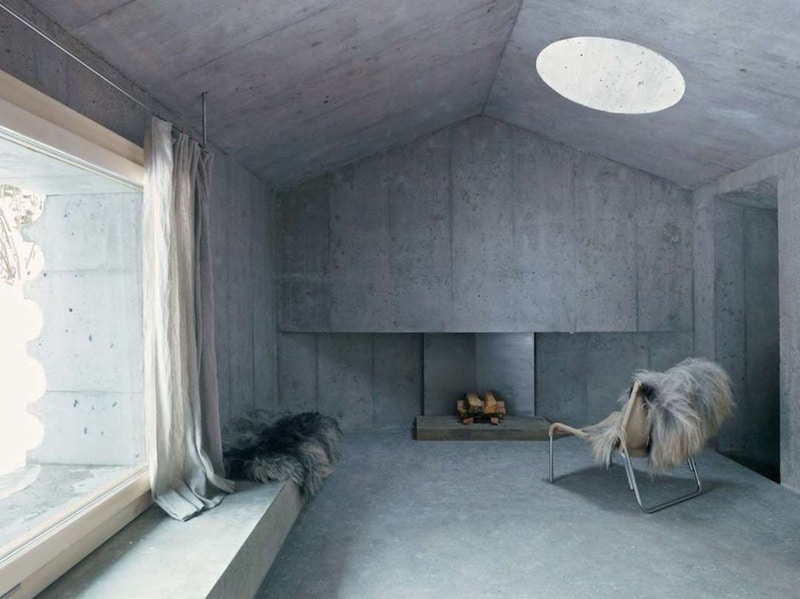
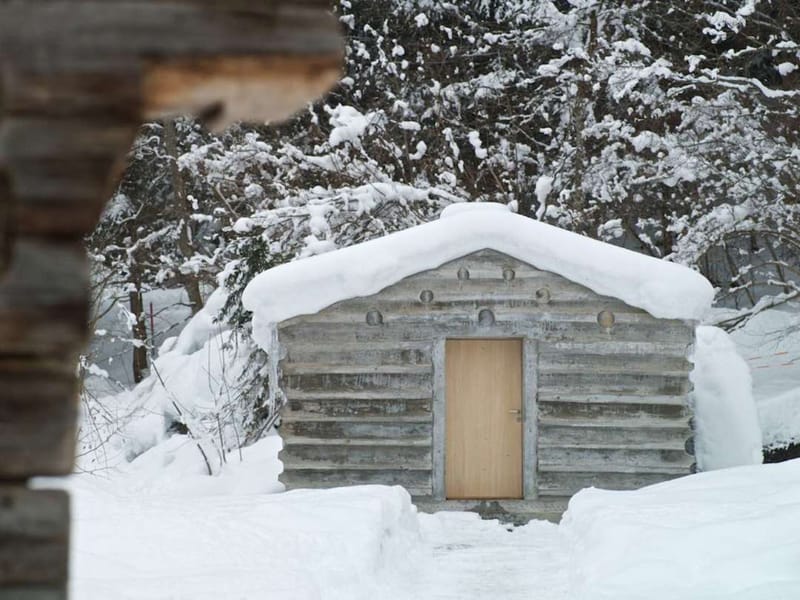
Ufogel by Urlaubsarchitektur, Lienz, Austria
Floating on stilts over the hill the exceptional holiday house looks like a blend of a UFO and a bird. Called Ufogel, the house combines the customary materials with bold geometry. It is covered with traditional shingles and feels like a cozy nest that offers optimal levels of privacy and stunning views from unexpected places within its interior. You can enjoy the views of the mountains while showering or brushing your teeth. With a floor area of 485 square feet, this slightly elevated gem can accommodate up to four people at a time, functioning as a perfect vacation home.
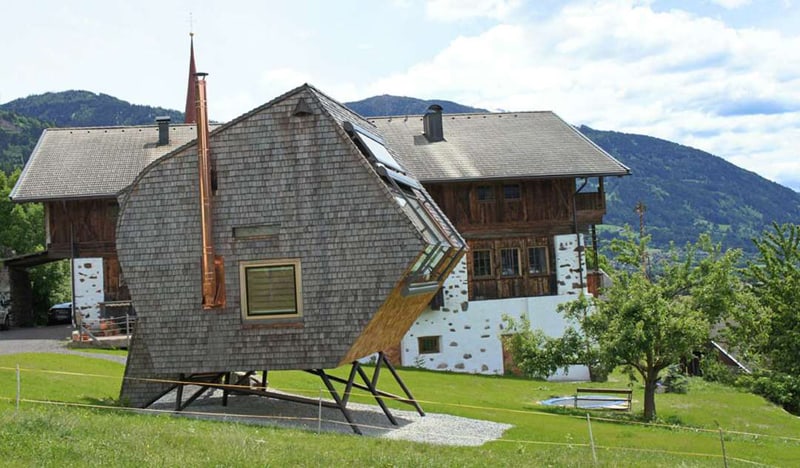
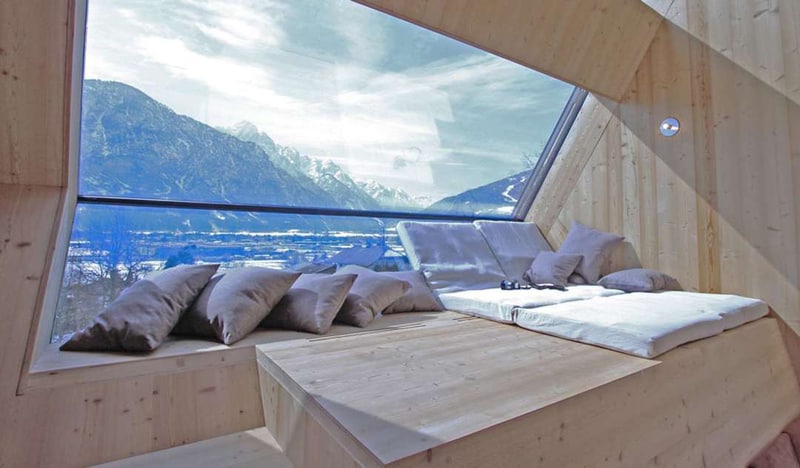
New Mountain Hut Tracuit by Savioz Fabrizzi Architectes, Zermatt, Switzerland
Perched on an Alpine ridge 3256 metres above sea level, this shiny steel cabin by Swiss firm Savioz Fabrizzi Architectes creates a starting point for mountaineers climbing the Bishorn, Weisshorn or Tête de Milon. The new Tracuit Hut is situated along a ridge caught between a cliff and a glacier. Due to its location, the wooden structural frame and wall components were prefabricated. This glazed hut, designed by the Swiss firm Savioz Fabrizzi Architectes, reflects its surroundings and resembles a large piece of ice.
Paramount Alma by Plasma Studio, South Tyrol, Italy
Plasma Studio’s Tyrolean guest house references traditional pitched-roof mountain houses by taking the original concept to the extreme and translating it into a porous building that merges with the steep hillside. Strips of larch wood create a visual connection to the adjacent Strata Hotel and enclose the interior while offering 360-degree views of the surroundings. Concrete structural elements were combined with steel and the outer layer was made from prefabricated cross-laminated timber (CLT). Two floors of living spaces accommodate an open-plan kitchen, dining area, and a large living room encircling a fireplace.

